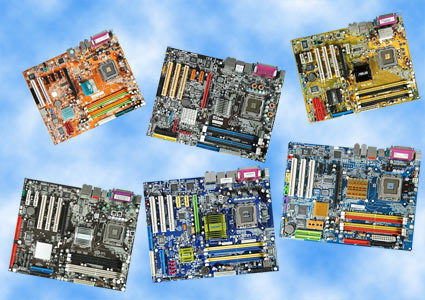The Value Connection of 6 Intel 945P Motherboards
Six Pentium Motherboards Reviewed
We recently ruffled a lot of feathers when we compared a low-cost and premium motherboard and showed that the differences in quality were very small, indeed. The value add that expensive motherboards offer compared to cheap products has been shrinking, in fact, for years. So, are there any substantive differences left between today's motherboards? Could the price war jeopardize the quality levels?
Meanwhile, processor giant Intel continues to maintain healthy margins. This can be attributed to the firm's emphasis on offering a complete platform, which corporate customers appreciate since Intel assumes the compiling, validating and marketing efforts associated with a complete platform - Centrino is by far the best example. Yet among the end users, opinions vary and Intel's main competitor AMD is likely more in favor. AMD's processors currently provide better performance at comparable price points while featuring much lower energy consumption and heat dissipation at the same time.
Furthermore, and of critical importance is that the performance questions is becoming moot - since there is no noticeable difference between a Pentium 4 running 3.0 or 3.8 GHz and an Athlon 64 3200+ or 4000+ unless you intend to run applications that undoubtedly require a lot of computing power. For the overwhelming majority of users and mainstream software applications, the differences in computing power remain imperceptible. The extra CPU horsepower will offer no noticeable improvements in email, Web browsing, office applications, simple graphics editing, DVD watching or other applications that represent over 90% of PC needs.
If you like gaming you should go for a stunning fast graphics card, if you edit video check out additional hard drives or a RAID array and if you like running several applications at the same time, make sure you don't run out of RAM. That's usually it, because the computing power that most applications require has been decreasing significantly - except for specialized applications.
If you are looking to assemble a versatile system, you will notice an interesting development: While AMD has been providing the best price/performance ratio out there, the quality level of the two processor giants' products has converged. Should a dual core system find its way in your dream machine, Intel's Pentium D even outperforms AMD's X2 in terms of price/performance - although the Athlon 64 X2 3800+ was recently added to fight in the middle end.
Finally there is the option to upgrade to the Pentium D 900 series (65 nm Presler core with two 2 MB L2 caches in Q1/2006), which is going to remain a Socket-775 CPU. With a little luck the socket won't be changed for the introduction of Intel's next generation processor (Conroe) as well. At this point, AMD is going to replace socket 939 by its socket M2 in order to enable DDR2 support. All in all the outlook for Intel based motherboards is rather good today.
Get Tom's Hardware's best news and in-depth reviews, straight to your inbox.

Patrick Schmid was the editor-in-chief for Tom's Hardware from 2005 to 2006. He wrote numerous articles on a wide range of hardware topics, including storage, CPUs, and system builds.
